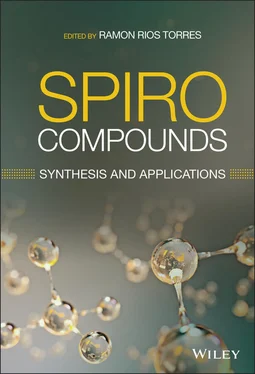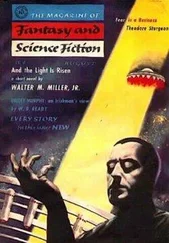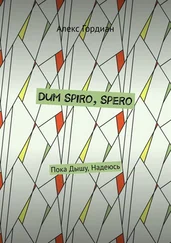Spiro Compounds
Здесь есть возможность читать онлайн «Spiro Compounds» — ознакомительный отрывок электронной книги совершенно бесплатно, а после прочтения отрывка купить полную версию. В некоторых случаях можно слушать аудио, скачать через торрент в формате fb2 и присутствует краткое содержание. Жанр: unrecognised, на английском языке. Описание произведения, (предисловие) а так же отзывы посетителей доступны на портале библиотеки ЛибКат.
- Название:Spiro Compounds
- Автор:
- Жанр:
- Год:неизвестен
- ISBN:нет данных
- Рейтинг книги:3 / 5. Голосов: 1
-
Избранное:Добавить в избранное
- Отзывы:
-
Ваша оценка:
- 60
- 1
- 2
- 3
- 4
- 5
Spiro Compounds: краткое содержание, описание и аннотация
Предлагаем к чтению аннотацию, описание, краткое содержание или предисловие (зависит от того, что написал сам автор книги «Spiro Compounds»). Если вы не нашли необходимую информацию о книге — напишите в комментариях, мы постараемся отыскать её.
A comprehensive treatment of the latest research in, and applications of, spiro compounds Spiro Compounds: Synthesis and Applications
Spiro Compounds
Spiro Compounds — читать онлайн ознакомительный отрывок
Ниже представлен текст книги, разбитый по страницам. Система сохранения места последней прочитанной страницы, позволяет с удобством читать онлайн бесплатно книгу «Spiro Compounds», без необходимости каждый раз заново искать на чём Вы остановились. Поставьте закладку, и сможете в любой момент перейти на страницу, на которой закончили чтение.
Интервал:
Закладка:
2.5 Further Examples
The unique range of properties provided by spirocycles has resulted in the development of a large number of bioactive lead compounds, and would easily deserve the attention of an entire book. These agents are targeting a wide range of protein/enzymes involved in diverse disorders, such as skin conditions, nausea, neurodegeneration, chronic pain, or even malaria. A few representative examples are presented in Figures 2.9and 2.10. For example, the carba‐spirocyclic natural product Ingenol mebutate ( 36) acts as a protein kinase C activator, and was approved by the FDA (tradename Picato®) in 2012 for the treatment of actinic keratosis. It can be prepared on a large scale in a protection/acylation/deprotection three step sequence from the naturally abundant ingenol [58]. The aza‐spirocyclic drug Rolapitant ( 38) is a potent and selective Neurokinin‐1 (NK‐1) receptor antagonist which was recently approved for the prevention of delayed chemotherapy‐induced nausea and vomiting (CINV) in adults, in combination with other antiemetics. Its spirocyclic scaffold can be accessed via the Michael addition of the corresponding nitro‐piperidine onto methyl acrylate, followed by reduction and subsequent lactamization. The oxa‐spirocyclic, investigational molecule Cebranopadol 40is a potent opioid receptor agonist, and is currently under development for the treatment of a range of acute and chronic pain conditions. Key to the synthesis of 40is a Lewis acid‐mediated oxa‐Pictet–Spengler reaction of the substituted parent cyclohexanone and indole fragments [59]. Of note, a review of the recent literature shows that five‐ and six‐membered rings still dominate the pool of spiro compounds. As discussed earlier in this chapter, this trend is not surprising. This is mainly due to their restricted conformation compared with larger ring systems, and the historical synthetic challenges associated with smaller ones. It is expected that the developments of synthetic methods to prepare four‐membered heterocyclic spiro systems in the last decade will naturally lead to a better representation of these features in the literature [60].
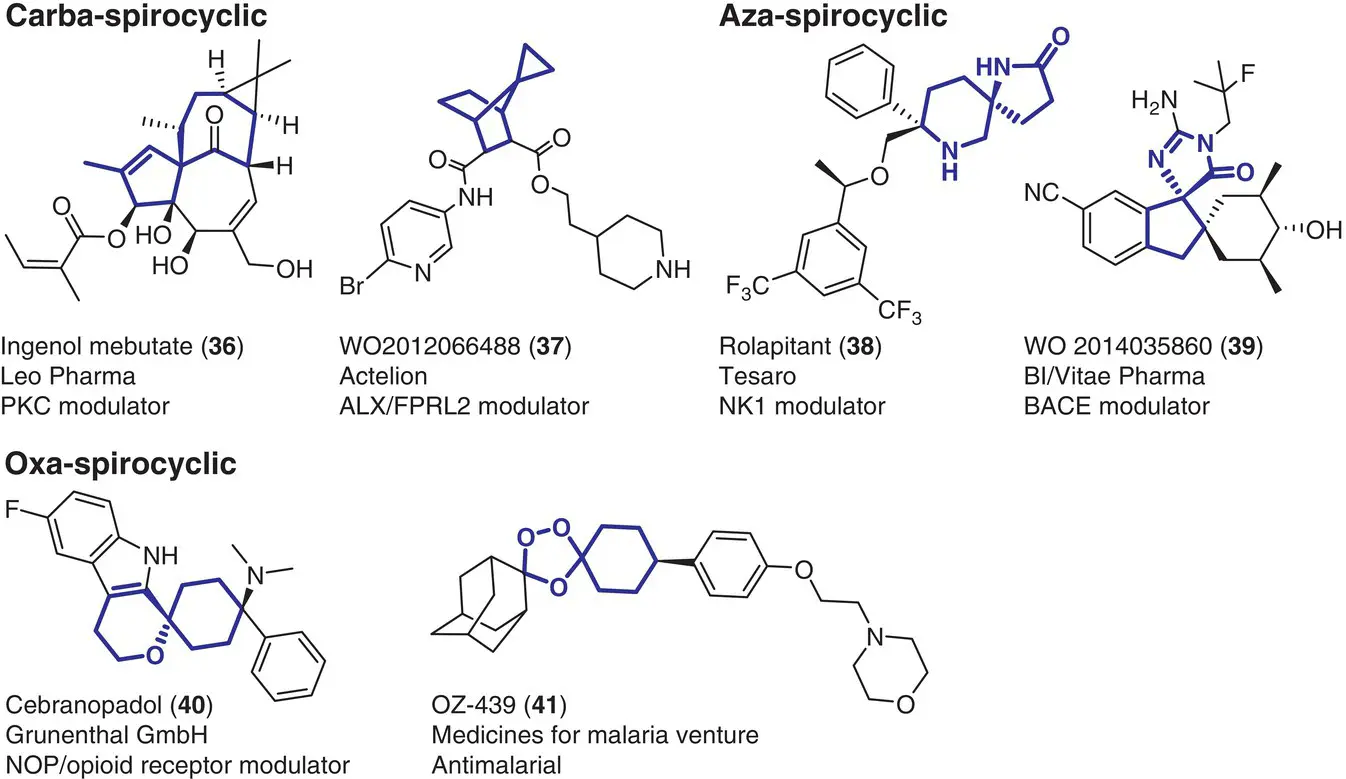
Figure 2.9 Representative examples of spirocyclic bioactive lead molecules.
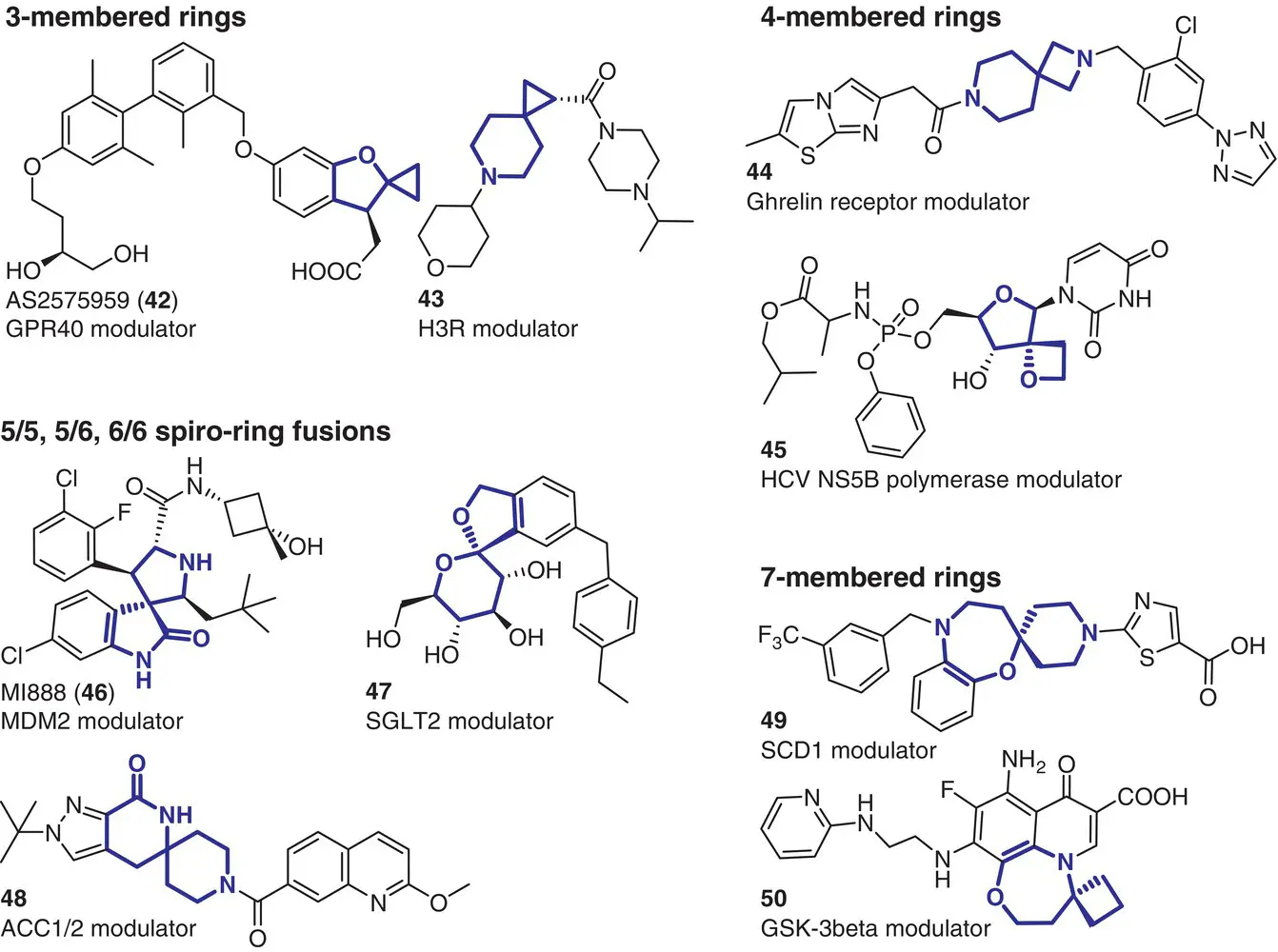
Figure 2.10 Additional examples further illustrating the breadth of ring types and sizes found in lead molecules of medicinal chemistry interest.
2.6 Conclusions
In this chapter, a number of useful applications of spirocycles in medicinal chemistry and their impacts in drug discovery were highlighted. The introduction of spirocycles has proven valuable for optimizing key parameters such as conformational freedom/restriction, lipophilicity, solubility, basicity, and metabolic stability, in addition to opportunities in exploring novel chemical and IP space. As mentioned, the synthetic challenge associated with spirocyclic compounds along with the wider range of chemical transformations of historical building blocks such as reactive arenes have been major contributors to their lower occurrence in the drug discovery patent literature and in commercial small‐molecule screening libraries compared with non‐spirocyclic compounds. Controlling the stereochemistry of the spirocycle also adds to the challenge, and will be discussed in the subsequent chapters of this book. This last point also perhaps provides an explanation why the majority of synthetic spirocyclic compounds reported in the literature contain only one spirocycle. It is also worth mentioning that sp 2‐rich systems also present some indubitable advantages when it comes to screening technologies (e.g. fragments), such as the ability to monitor their behavior (e.g. binding) in fluorescence‐based assays and ligand‐observed NMR experiments under water suppression conditions. The lack of suitable fluorophore or 1H chemical shifts in sub‐aromatic regions can make spirocyclic systems unsuitable in a number of biophysical assays if sp 2functionalities are not present elsewhere in the molecule. Additionally, despite the mounting evidence highlighting the potential of spirocycles for enhancing the metabolic stability of a wide range of compounds, examples of studies on their metabolites [61] are less common and much remains to be done to evaluate the wider stability landscape of individual spirocyclic classes in vitro and in full organisms. A systematic assessment of the molecular mechanisms and pathways underlying their metabolic activation in a context‐dependent manner will be paramount for the design of next‐generation spirocyclic structures with optimal stability. Nevertheless, the advances in chemical transformations and diversity‐oriented synthesis approaches [62–67] in the last two decades have changed the landscape. As a result, spirocycles have now made their way toward screening compound libraries and an ever‐increasing number of novel spirocyclic building blocks are now commercially available ( Figure 2.11). Many institutions and commercial vendors have incorporated spirocyclic lead‐like compounds and fragments in their historical libraries, expanding the scope of available scaffolds for structure‐based drug design and novel IP generation. Four, five, and six‐membered rings containing spirocycles have historically received most attention for structure‐based drug design. This is in great part due to their inherent chemical stability compared with three‐membered rings, low conformational freedom compared with larger ring systems, hence greater rigidity providing highly directional vectors for derivatization and efficient receptor targeting. A recent review by Carreira and Fessard highlighted the potential of spirocycles for generating new IP in medicinal chemistry and beyond [48]. Overall, while the potential of spirocycles in medicinal chemistry is still to be fully exploited, the steadily expanding scope of synthetic methods, bioactive leads, and associated biological data promises to unlock a wide range of novel molecular entities and pharmacologies, with much needed benefits to patients lurking around the corner.

Figure 2.11 Representative examples of (a) multifunctional spiro building blocks and (b) lead compounds for screening that are currently available from commercial vendors.
References
1 1 Moss, G. (1999). Extension and revision of the nomenclature for spiro compounds. Pure Appl. Chem. 71 (3): 531–558.
2 2 Knox, C., Law, V., Jewison, T. et al. (2011). DrugBank 3.0: a comprehensive resource for “omics” research on drugs. Nucleic Acids Res. 39: D1035–D1041.
3 3 Krebs, A., Schafer, B., and Kochner, A. (2010). Method for producing azoniaspironortropine esters and nortropan‐3‐one compounds, US2010048903.
4 4 Smith, L.K. and Baxendale, I.R. (2015). Total syntheses of natural products containing spirocarbocycles. Org. Biomol. Chem. 13 (39): 9907–9933.
5 5 Zhang, F.‐M., Zhang, S.‐Y., and Tu, Y.‐Q. (2018). Recent progress in the isolation, bioactivity, biosynthesis, and total synthesis of natural spiroketals. Nat. Prod. Rep. 35 (1): 75–104.
6 6 Perron, F. and Albizati, K.F. (1989). Chemistry of spiroketals. Chem. Rev. 89 (7): 1617–1661.
Читать дальшеИнтервал:
Закладка:
Похожие книги на «Spiro Compounds»
Представляем Вашему вниманию похожие книги на «Spiro Compounds» списком для выбора. Мы отобрали схожую по названию и смыслу литературу в надежде предоставить читателям больше вариантов отыскать новые, интересные, ещё непрочитанные произведения.
Обсуждение, отзывы о книге «Spiro Compounds» и просто собственные мнения читателей. Оставьте ваши комментарии, напишите, что Вы думаете о произведении, его смысле или главных героях. Укажите что конкретно понравилось, а что нет, и почему Вы так считаете.
